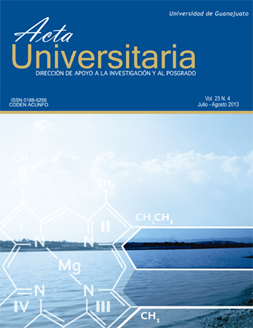Physical characterization of an extensive volcanic rock in México: “red tezontle” from Cerro de la Cruz, in Tlahuelilpan, Hidalgo, Mexico
Published 2013-09-13
Keywords
- Tezontle,
- volcanic rock,
- physical characterization.
- Tezontle,
- roca volcánica,
- caracterización física.
How to Cite
Abstract
Tezontle is an extrusive volcanic rock, coming in black or red in color. Despite its many uses and applications, there are few studies concerning the attributes of this rock. Therefore, this work to the physical characterization of red tezontle samples, taken from Tlahuelilpan, Hidalgo, Mexico. After grinding and sieving, the following properties were obtained: humidity (0.37% to 0.48%), weighed moisture-retention capacity (7.50% – 43.56%) and volumetric moisture-retention capacity (5% – 25%), which justifies its hydroponic and gardening uses; particle density (2.37 g cm-3 - 2.83 g cm-3), dry bulk density (0.87 g cm-3 - 1.33 g cm-3), total pore space (52.83% - 63.90 %), specific surface area (5.558 m2 g-1 and 9.66 m2 g-1) and cation exchange capacity (4.04 Cmol(+) kg-1), whose low values contradict the high efficiency reported for cation removal. The preliminary analysis of the X-ray diffraction pattern shows intense peaks of quartz and suggests the presence of plagioclases (anorthite and albite).

